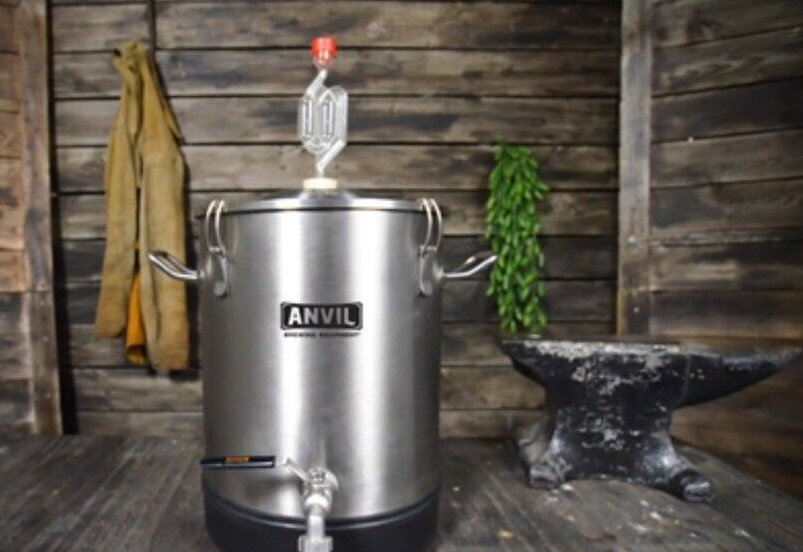The Home Brew Fermenter – A Complete Guide
Introduction
Hello, my fellow brew lovers! One of, if not the most important pieces of home brewing equipment is the fermenter, and today, I’ll be your guide to navigating the world of the home brew fermenter. We’ll delve deep into understanding what a fermenter is, its importance, the different types, how to choose and use one, and much more.
Understanding Fermentation in Home Brewing
In home brewing, the magic begins with a process known as fermentation. This is a stage where the yeast, our microscopic brewing friends, convert the sugars present in the wort into alcohol and carbon dioxide. This alchemical transformation is what turns a sweet liquid into the delicious brew that we all know and love.
The Role of a Fermenter
Think of your home brew fermenter as the stage where tiny actors (yeast) perform their magical act. It’s essentially a container where you mix your wort (unfermented beer) and yeast to kickstart the fermentation process. It’s also the cozy home for yeast while they munch on sugars, belch out alcohol, carbon dioxide, and other compounds that give beer its multitude of flavors and aromas.
Types of Home Brewing Fermenters
There’s a variety of fermenters available for home brewing, each with its own strengths and weaknesses. Let’s discuss some popular ones, along with their price ranges, pros, and cons.
Glass Carboys
Traditional and quite popular, glass carboys offer a clear view of the fermentation process, letting you witness the captivating dance of yeast. They are available in the market for around $30-$120. However, while they are great for observing fermentation, they can be heavy, prone to breakage, and their narrow necks make cleaning a bit of a hassle.
Plastic Fermentation Buckets
Light on your pocket (typically $20-$50) and on your arms, plastic fermentation buckets are a popular choice among beginner brewers. Their wide opening makes it easy to clean and add ingredients. However, plastic buckets can be prone to scratches that might harbor unwanted bacteria. Also, they don’t allow for visual monitoring of the fermentation process.
Stainless Steel Fermenters
The cream of the crop, stainless steel fermenters, are durable, easy to clean and sanitize, resistant to scratches, and don’t harbor flavors or odors. However, these perks come with a higher price tag, with basic models starting from $100 and going upwards to $500. Also, they don’t offer a clear view of the fermentation process.
Plastic Carboys
Plastic carboys offer the visibility of glass carboys and the durability of plastic buckets. They are relatively lightweight and more resistant to breakage than glass carboys. Their price range is similar to plastic fermentation buckets ($30-$60). However, they share the same scratch risk as plastic buckets.
Conical Fermenters
A dream for many home brewers, conical fermenters mimic the professional brewing setup, allowing yeast and sediment to settle at the bottom for easy removal. They come in both plastic and stainless steel, ranging from $100 to over $500. Their key downside is their cost and size, which may not fit everyone’s budget or brewing space.
Choosing the Right Home Brew Fermenter for You
Choosing the right fermenter is a balance of your brewing needs, budget, space, and personal preferences. Consider the volume of beer you plan to brew, the space you have available, your budget, and how much you value being able to watch the fermentation process.
Detailed Guidelines for Setting Up Your Home Brew Fermenter
Before we kick off fermentation, it’s essential to set up the fermenter correctly. Here’s the general process. First, clean and sanitize the fermenter and its components. Then, transfer your cooled wort into the fermenter. Next, pitch the yeast into the fermenter. Finally, seal the fermenter, usually with a lid for buckets or a bung and airlock for carboys and conical fermenters. The airlock allows CO2 to escape while preventing air and contaminants from entering the fermenter.
The Fermentation Process: A Closer Look
Once you’ve set up your fermenter, the yeast starts feasting on the sugars, producing alcohol, carbon dioxide, and heat. The first few days, known as the primary fermentation, are the most active, where the yeast multiplies rapidly, and the sugar is consumed most vigorously. Following this is the secondary fermentation, which is slower and where the yeast finishes consuming the remaining sugars and starts cleaning up some of the byproducts produced during the primary fermentation.
Cleaning and Sanitizing Your Fermenter: The Importance and Best Practices
Keeping your fermenter clean and sanitized is crucial to prevent off-flavors and spoilage. Remember, a dirty fermenter is a playground for bacteria that can ruin your brew. For cleaning, use non-abrasive tools and cleaners designed for brewing equipment. Follow this with a good sanitizing solution. It’s best to clean and sanitize just before use to minimize the chance of contamination.
Upgrading Your Fermenter – When and Why
As you delve deeper into the home brewing journey, you may start considering an upgrade to your home brew fermenter. Whether it’s moving from a plastic bucket to a glass carboy for a clearer view of the fermentation process, or from a carboy to a conical fermenter for a more professional setup, upgrading can enhance your brewing experience and the quality of your brew.
Common Challenges with Home Brew Fermenters and How to Overcome Them
Every brewer encounters some challenges with their fermenter. Whether it’s difficulty in cleaning carboys or handling scratches on plastic buckets, remember that every challenge can be overcome. For instance, using special cleaning brushes or solutions can help with cleaning carboys, while being careful with tools can prevent scratches on plastic.
Conclusion
And there you have it, my fellow brew lovers – a comprehensive guide to the home brew fermenter. Whether you’re just embarking on your brewing journey or looking to level up your brewing game, I hope this guide proves useful. Remember, brewing is as much about the process as it is about the end product. So take your time, learn from each brew, and most importantly, enjoy the journey. Happy brewing!
FAQs
1. Can I use any container as a home brew fermenter?
Technically, yes, but it’s best to use containers designed for brewing. They are made of food-safe materials and designed to accommodate an airlock.
2. How long does beer need to stay in the fermenter?
Typically, beer stays in the home brew fermenter for about two weeks, but this can vary based on the style of beer and the yeast.
3. How do I know when fermentation is done?
The most accurate way is by taking gravity readings with a hydrometer. When readings remain the same over two to three days, fermentation is usually complete.
4. How do I manage temperature during fermentation?
Temperature control can be managed by placing your home brew fermenter in a location with stable temperature or using specialized equipment like a fermentation chamber.
5. How much beer can I brew in my home brew fermenter?
This depends on the size of your fermenter. You should leave some space, often referred to as “headspace,” to allow room for the foam that forms during fermentation.




